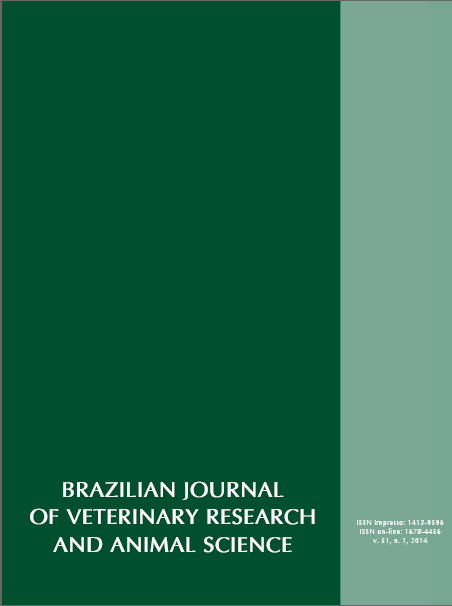Ultrasonography as an ancillary method for the positioning of markers in equine motion analysis
DOI:
https://doi.org/10.11606/issn.1678-4456.v51i1p24-29Keywords:
Anatomical landmarks, Horse, Kinematic analysis, Locomotion, UltrasoundAbstract
Kinematic motion analysis is based on the reconstruction of selected bony anatomical landmarks identified by surface markers. Anatomical landmarks generally do not correspond to points but rather to relatively large and curved areas and their identification by palpation is not easy. Precise placement of surface markers is even more difficult and there is great variability between operators. In this study 16 examiners were asked to identify the lateral border of the left ischial tuberosity in a horse using palpation and ultrasonography for placement of a corresponding skin surface marker. Images of each marking procedure were captured using two video cameras and processed using the DVideow videogrammetry. A custom-written Matlab code was used to determine the position of the respective vectors. The positions of the markers were then compared to assess inter-examiner variability and the precision of the methods employed using the Bartletttest and the paired t-test respectively. Ultrasonography significantly improved the location of the anatomical landmark by each examiner (p = 0.04) and reduced the variability in the position of the surface marker when compared to palpation (p = 0.0028). The variability of the calculated distances (mean ± SD) was 2.89 ± 2.24 cm and 1.63 ± 0.98 cm using palpation and ultrasonography respectively. Ultrasound guidance reduced inter-examiner variability and allowed visualization of the corresponding bony anatomical landmark.
Downloads
Downloads
Published
Issue
Section
License
The journal content is authorized under the Creative Commons BY-NC-SA license (summary of the license: https://





